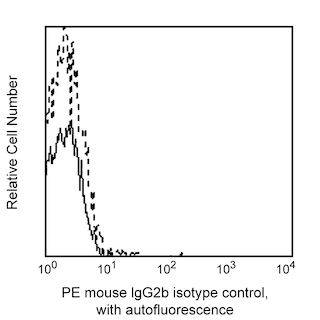-
Training
- Flow Cytometry Basic Training
-
Product-Based Training
- BD FACSDiscover™ S8 Cell Sorter Product Training
- Accuri C6 Plus Product-Based Training
- FACSAria Product Based Training
- FACSCanto Product-Based Training
- FACSLyric Product-Based Training
- FACSMelody Product-Based Training
- FACSymphony Product-Based Training
- HTS Product-Based Training
- LSRFortessa Product-Based Training
- Advanced Training
-
- BD FACSDiscover™ S8 Cell Sorter Product Training
- Accuri C6 Plus Product-Based Training
- FACSAria Product Based Training
- FACSCanto Product-Based Training
- FACSLyric Product-Based Training
- FACSMelody Product-Based Training
- FACSymphony Product-Based Training
- HTS Product-Based Training
- LSRFortessa Product-Based Training
- United States (English)
-
Change country/language
Old Browser
This page has been recently translated and is available in French now.
Looks like you're visiting us from {countryName}.
Would you like to stay on the current country site or be switched to your country?


.png)

Flow cytometric analysis of human CD110 expression on platelets and HEL92.1.7 cells. Platelets (Left Panel) and HEL92.1.7 cells (Right Panel) were stained with either PE Mouse IgG2b Isotype Control (Cat. No. 555743; dashed line histogram) or PE Mouse anti-Human CD110 (Cat. No. 562159; solid line histogram). Flow cytometric fluorescence histograms were derived from gated events with the forward and side light-scatter characteristics of platelets or viable HEL92.1.7 cells. Flow cytometry was performed using a BD™ LSR II Flow Cytometer System.
.png)

BD Pharmingen™ PE Mouse anti-Human CD110
.png)
Regulatory Status Legend
Any use of products other than the permitted use without the express written authorization of Becton, Dickinson and Company is strictly prohibited.
Preparation And Storage
Product Notices
- Since applications vary, each investigator should titrate the reagent to obtain optimal results.
- Caution: Sodium azide yields highly toxic hydrazoic acid under acidic conditions. Dilute azide compounds in running water before discarding to avoid accumulation of potentially explosive deposits in plumbing.
- An isotype control should be used at the same concentration as the antibody of interest.
- For fluorochrome spectra and suitable instrument settings, please refer to our Multicolor Flow Cytometry web page at www.bdbiosciences.com/colors.
- Please refer to www.bdbiosciences.com/us/s/resources for technical protocols.
Companion Products


The 1.6.1 monoclonal antibody specifically binds to the human Thrombopoietin Receptor (TPO-R) that is also known as the Myeloproliferative leukemia protein (c-Mpl) or CD110. CD110 is a type I transmembrane glycoprotein and a member of the hematopoietin receptor family. It is expressed on hematopoietic stem cells, a subfraction of hematopoietic precursor cells, cells of the megakaryocytic lineage and platelets. CD110 serves as a receptor for thrombopoietin. Upon binding of thrombopoietin to CD110, megakaryocyte proliferation and differentiation is induced, platelets are produced and stem cells are protected from apoptosis.

Development References (5)
-
Abbott C, Huang G, Ellison AR, et al. Mouse monoclonal antibodies against human c-Mpl and characterization for flow cytometry applications.. Hybridoma (Larchmt). 2010; 29(2):103-13. (Clone-specific: Flow cytometry). View Reference
-
Broudy VC, Lin NL, Fox N, Taga T, Saito M, Kaushansky K. Thrombopoietin stimulates colony-forming unit-megakaryocyte proliferation and megakaryocyte maturation independently of cytokines that signal through the gp130 receptor subunit. Blood. 1996; 88(6):2026-2032. (Biology). View Reference
-
Deng B, Banu N, Malloy B, et al. An agonist murine monoclonal antibody to the human c-Mpl receptor stimulates megakaryocytopoiesis. Blood. 1998; 92(6):1981-1988. (Biology). View Reference
-
Fox NE, Lim J, Chen R, Geddis AE. F104S c-Mpl responds to a transmembrane domain-binding thrombopoietin receptor agonist: proof of concept that selected receptor mutations in congenital amegakaryocytic thrombocytopenia can be stimulated with alternative thrombopoietic agents. Exp Hematol. 2010; 38(5):384-391. (Clone-specific: Flow cytometry). View Reference
-
Gotoh A, Ritchie A, Takahira H, Broxmeyer HE. Thrombopoietin and erythropoietin activate inside-out signaling of integrin and enhance adhesion to immobilized fibronectin in human growth-factor-dependent hematopoietic cells. Ann Hematol. 1997; 75(5-6):207-213. (Biology). View Reference
Please refer to Support Documents for Quality Certificates
Global - Refer to manufacturer's instructions for use and related User Manuals and Technical data sheets before using this products as described
Comparisons, where applicable, are made against older BD Technology, manual methods or are general performance claims. Comparisons are not made against non-BD technologies, unless otherwise noted.
For Research Use Only. Not for use in diagnostic or therapeutic procedures.
Report a Site Issue
This form is intended to help us improve our website experience. For other support, please visit our Contact Us page.